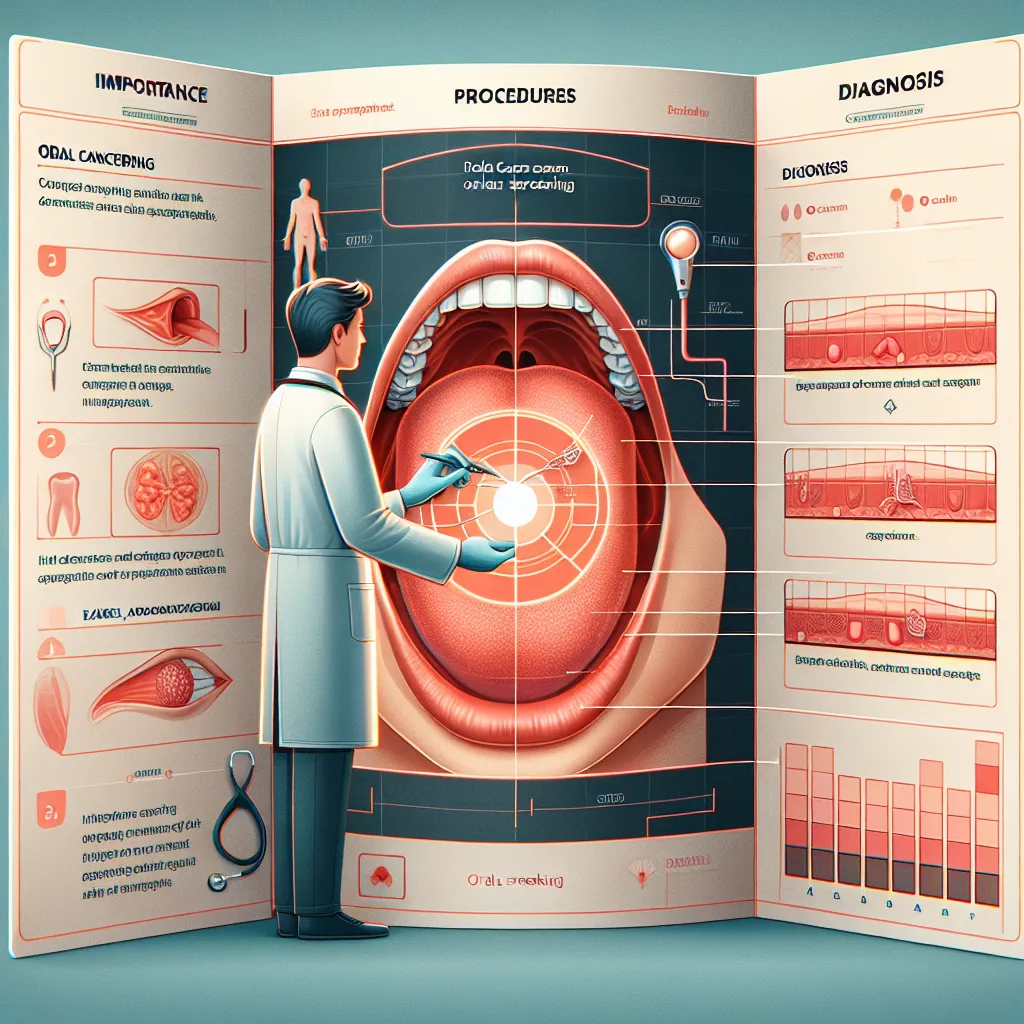
Importance, Procedures, and Diagnosis of Oral Cancer Screening
Oral cancer screening plays a crucial role in the early detection and treatment of oral cancer. This post explores the importance of regular screening, the advanced procedures utilized for detection, and the diagnostic tools used in the process.
The Significance of Regular Oral Cancer Screening
Regular oral cancer screening is a crucial aspect of healthcare that often goes overlooked. Many individuals underestimate the importance of these screenings, unaware of the potentially life-saving benefits they offer.
1. Early Detection Saves Lives
One of the primary reasons why regular oral cancer screening is so significant is the potential to detect cancer in its early stages. Early detection can immensely increase the chances of successful treatment and survival. By identifying abnormalities or signs of cancer at an early stage, healthcare professionals can initiate prompt interventions that can be crucial in saving lives.
2. Non-Invasive and Quick Procedure
Contrary to common misconceptions, oral cancer screening is a non-invasive and quick procedure. It does not involve any pain or discomfort and can be completed within a matter of minutes. The ease and efficiency of the screening process make it accessible to a wide range of individuals, emphasizing the importance of incorporating it into routine healthcare appointments.
3. Importance for High-Risk Individuals
For individuals with known risk factors such as tobacco use, alcohol consumption, or a family history of oral cancer, regular screenings are even more crucial. These individuals face a higher risk of developing oral cancer, making routine screenings a proactive measure in monitoring their health and detecting any potential issues at the earliest possible stage.
4. Peace of Mind and Empowerment
Besides the tangible benefits of early detection, regular oral cancer screening can provide individuals with peace of mind and a sense of empowerment over their health. Knowing that they are taking proactive steps towards their well-being by undergoing screenings can reduce anxiety and promote a positive outlook on overall health maintenance.
Advanced Procedures for Oral Cancer Detection
Oral cancer is a serious condition that can have devastating effects if not detected early. Fortunately, advancements in medical technology have led to the development of advanced procedures for detecting oral cancer at its earliest stages.
1. Fluorescence Visualization
One innovative method for oral cancer detection is fluorescence visualization, which involves the use of a special light to identify abnormal cells in the mouth. This technique can help dentists and healthcare professionals spot suspicious areas that may require further investigation.
2. Brush Biopsy
Brush biopsy is another advanced procedure used in oral cancer detection. During this procedure, a small brush is used to collect cells from the oral tissue. These cells are then examined under a microscope to check for any signs of cancerous or precancerous changes.
3. Salivary Diagnostic Tests
Salivary diagnostic tests are gaining popularity in the realm of oral cancer detection. By analyzing specific markers in the saliva, healthcare providers can potentially identify early signs of oral cancer. This non-invasive method offers a promising way to screen for oral cancer.
4. Optical Coherence Tomography (OCT)
Optical coherence tomography (OCT) is a cutting-edge imaging technique that is being utilized in the detection of oral cancer. This non-invasive procedure provides high-resolution cross-sectional images of oral tissue, aiding in the early diagnosis of potentially malignant lesions.
5. Genetic Testing
Genetic testing plays a crucial role in identifying individuals who may have a higher risk of developing oral cancer. By analyzing specific genetic markers, healthcare professionals can assess an individual’s genetic predisposition to the disease, allowing for targeted screening and preventive measures.
6. Computer-Aided Detection Systems
Computer-aided detection systems are revolutionizing the field of oral cancer detection. These systems use advanced algorithms to analyze images of the oral cavity, helping to identify suspicious areas that may warrant further evaluation. This technology enhances the accuracy and efficiency of oral cancer screening.
7. 3D Imaging Technologies
3D imaging technologies provide a comprehensive view of the oral cavity, allowing healthcare providers to examine the tissues in detail. By utilizing 3D imaging, abnormalities or irregularities that may indicate oral cancer can be visualized with precision, enabling early detection and timely intervention.
Diagnostic Tools Utilized in Oral Cancer Screening
Oral cancer, although often overlooked, is a serious and potentially life-threatening condition that requires timely detection and treatment. Fortunately, with advancements in medical technology, various diagnostic tools are now available to aid in the early detection of oral cancer, increasing the chances of successful treatment and improved outcomes.
1. Visual Screening
Visual screening is a fundamental component of oral cancer examinations, involving a thorough inspection of the oral cavity for any abnormalities, such as sores, red or white patches, or persistent lumps. Dentists and healthcare professionals use specialized lights and mirrors to examine hard-to-reach areas, ensuring a comprehensive assessment.
2. Tissue Biopsy
A tissue biopsy is a definitive diagnostic tool used to confirm the presence of oral cancer. During this procedure, a small sample of abnormal tissue is extracted from the oral lesion and examined under a microscope for the presence of cancer cells. Tissue biopsy results provide critical information for the accurate diagnosis and staging of oral cancer.
3. Oral Brush Biopsy
An oral brush biopsy is a minimally invasive procedure that allows for the collection of cells from suspicious oral lesions for microscopic examination. This non-invasive technique is particularly useful in identifying potentially malignant or cancerous cells early on, guiding further diagnostic and treatment decisions.
4. Salivary Tests
Salivary tests involve the analysis of saliva samples for specific biomarkers associated with oral cancer. By detecting biomolecular changes indicative of oral cancer development, salivary tests offer a non-invasive and convenient method for screening high-risk individuals and monitoring treatment responses.